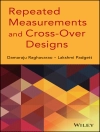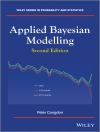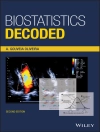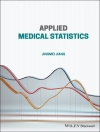This book focuses on statistical methods for the analysis of discrete failure times. Failure time analysis is one of the most important fields in statistical research, with applications affecting a wide range of disciplines, in particular, demography, econometrics, epidemiology and clinical research. Although there are a large variety of statistical methods for failure time analysis, many techniques are designed for failure times that are measured on a continuous scale. In empirical studies, however, failure times are often discrete, either because they have been measured in intervals (e.g., quarterly or yearly) or because they have been rounded or grouped. The book covers well-established methods like life-table analysis and discrete hazard regression models, but also introduces state-of-the art techniques for model evaluation, nonparametric estimation and variable selection. Throughout, the methods are illustrated by real life applications, and relationships to survival analysis in continuous time are explained. Each section includes a set of exercises on the respective topics. Various functions and tools for the analysis of discrete survival data are collected in the R package disc Surv that accompanies the book.
Tabla de materias
Introduction.- The Life Table.- Basic Regression Models.- Evaluation and Model Choice.- Nonparametric Modelling and Smooth Effects.- Tree-Based Approaches.- High-Dimensional Models – Structuring and Selection of Predictors.- Competing Risks Models.- Multiple-Spell Analysis.- Frailty Models and Heterogeneity.- Multiple-Spell Analysis.- List of Examples.- Bibliography.- Subject Index.- Author Index.
Sobre el autor
Gerhard Tutz is a professor of statistics at the Department of Statistics at the University of Munich. He has published several books with Springer.
Matthias Schmid is a professor of Medical Biometry, Informatics and Epidemiology at the University of Bonn. He received his diploma (2004) and his Ph.D. (2007) in statistics at the University of Munich and his habilitation (2012) in biostatistics at the University of Erlangen. Before working in Bonn, he was professor of computational statistics at the Department of Statistics at the University of Munich (2013-2014).












